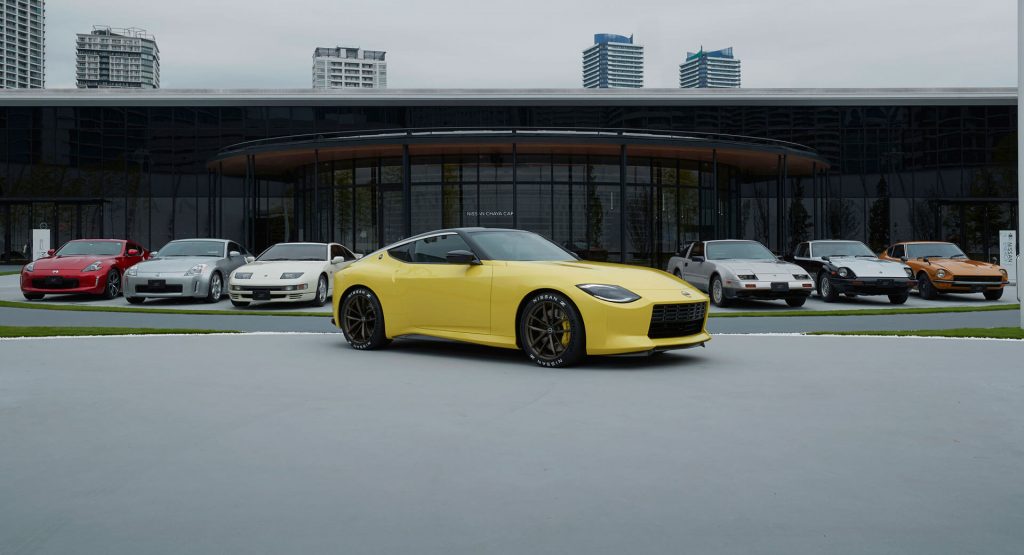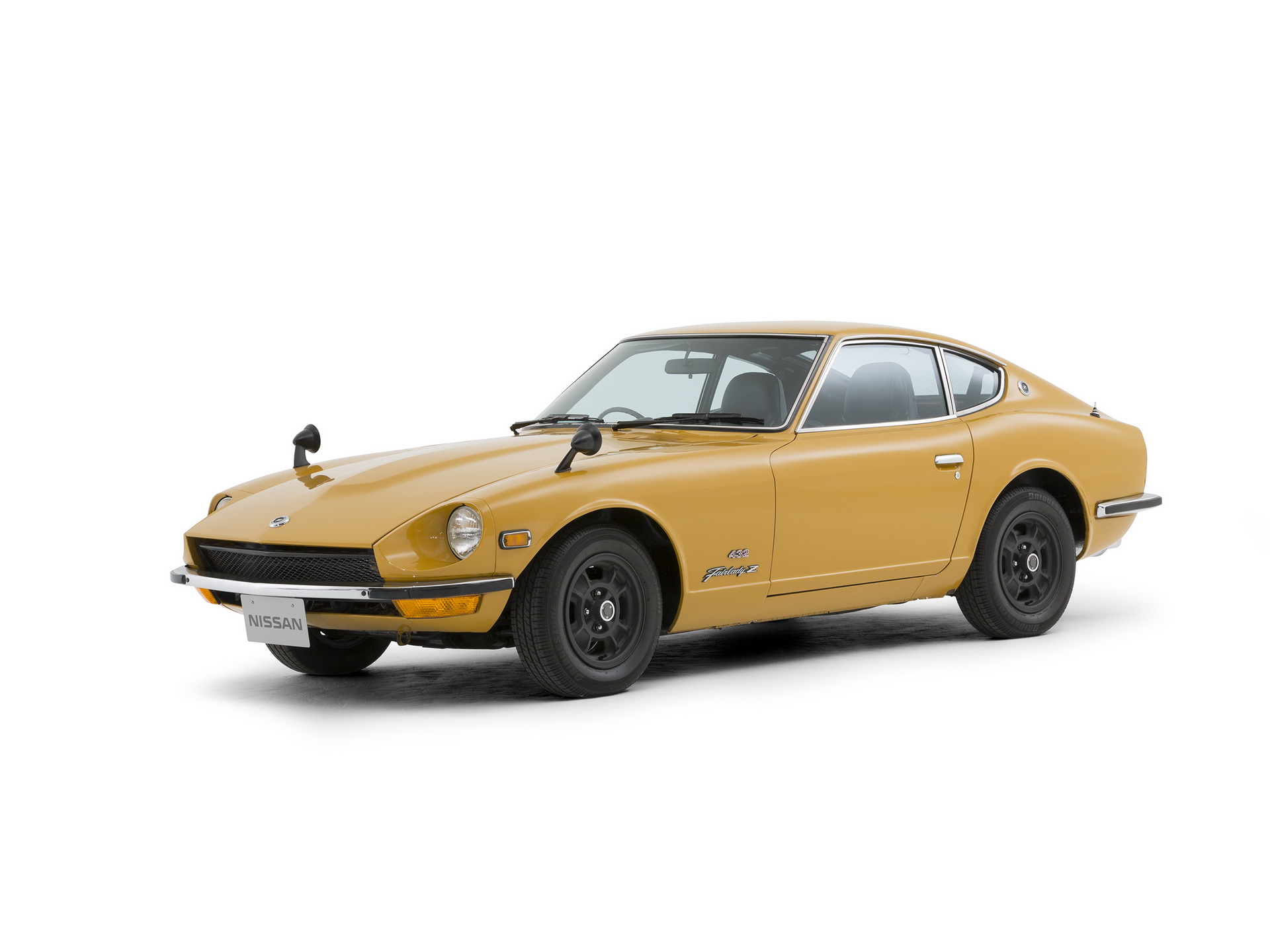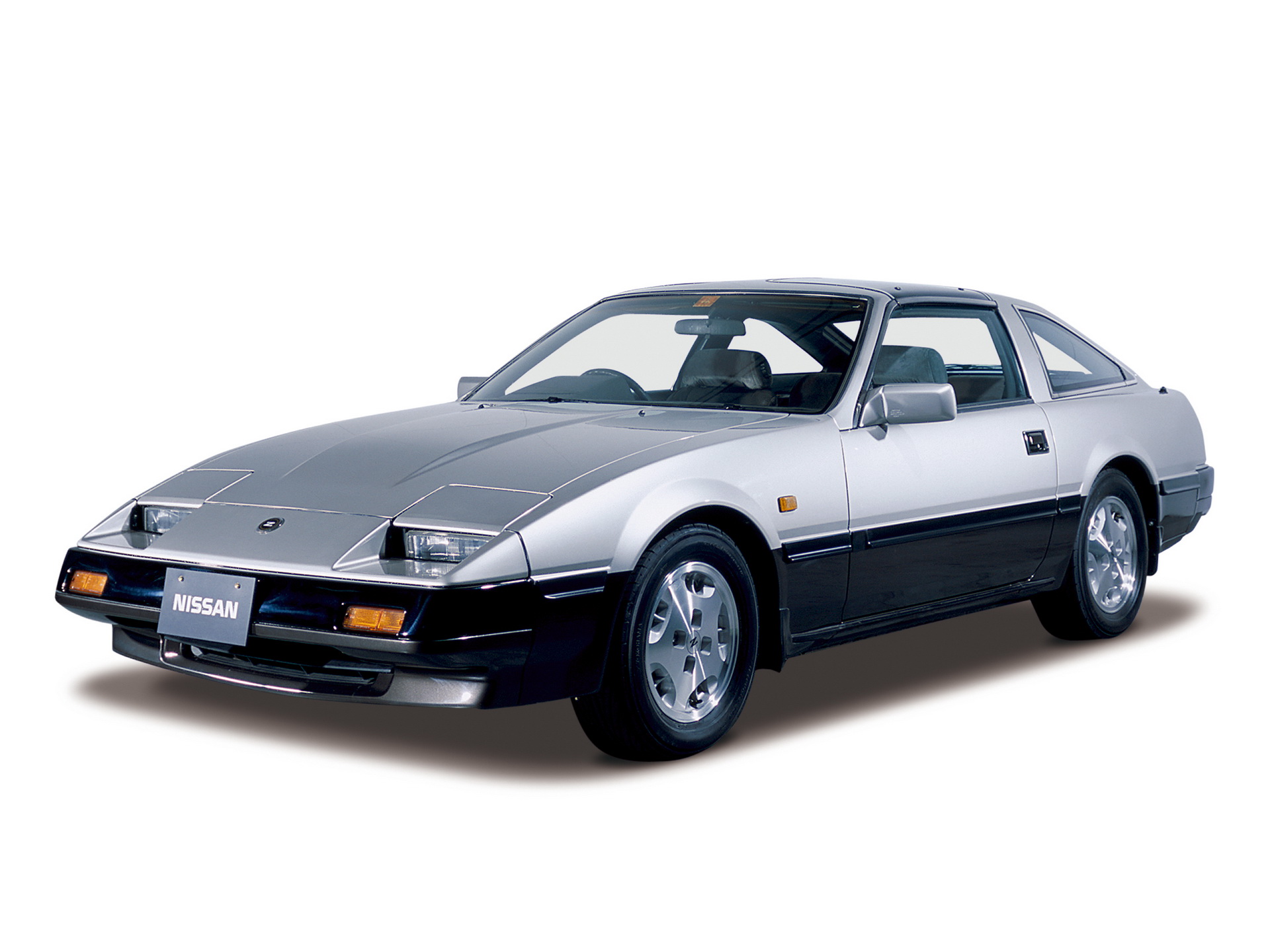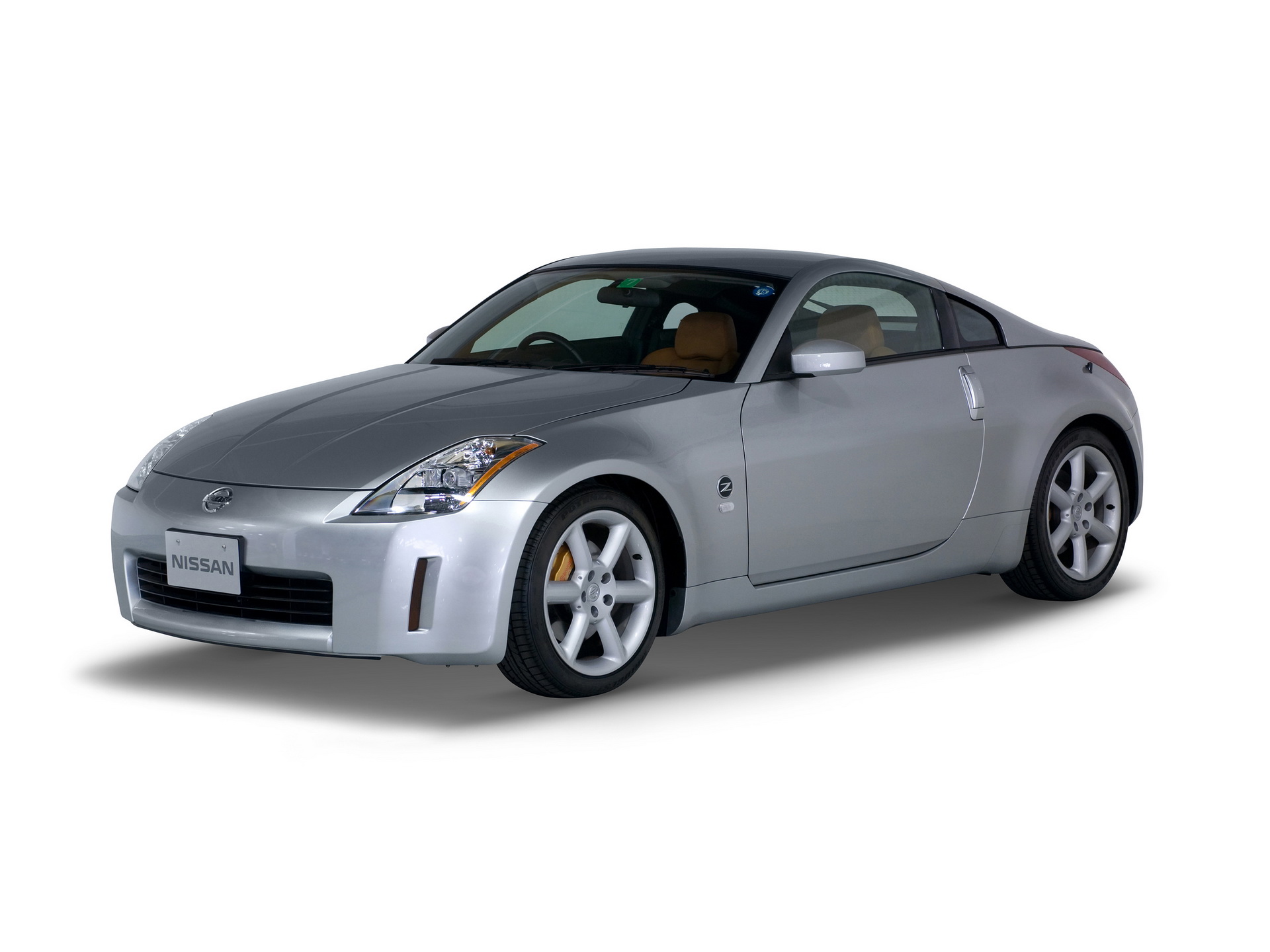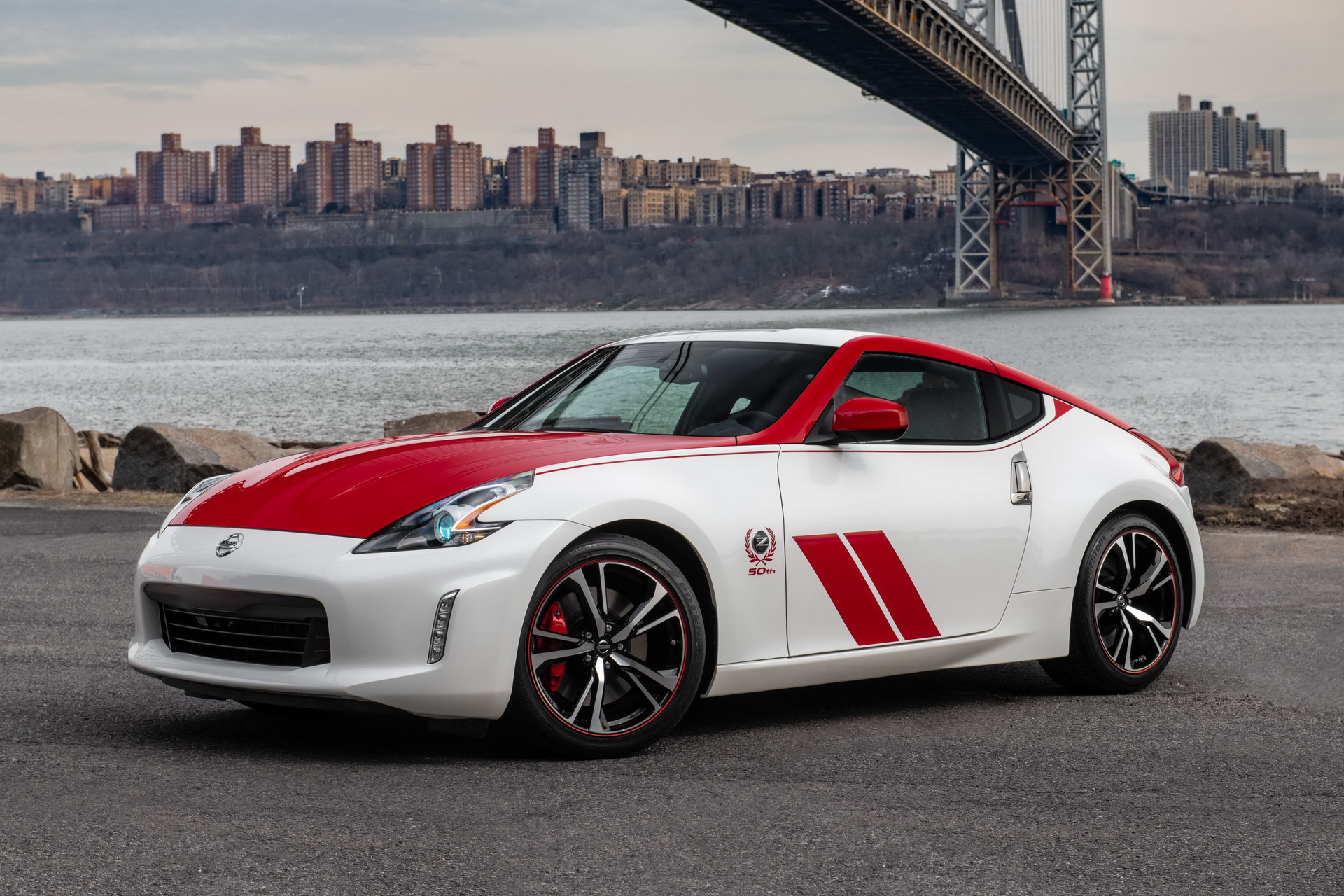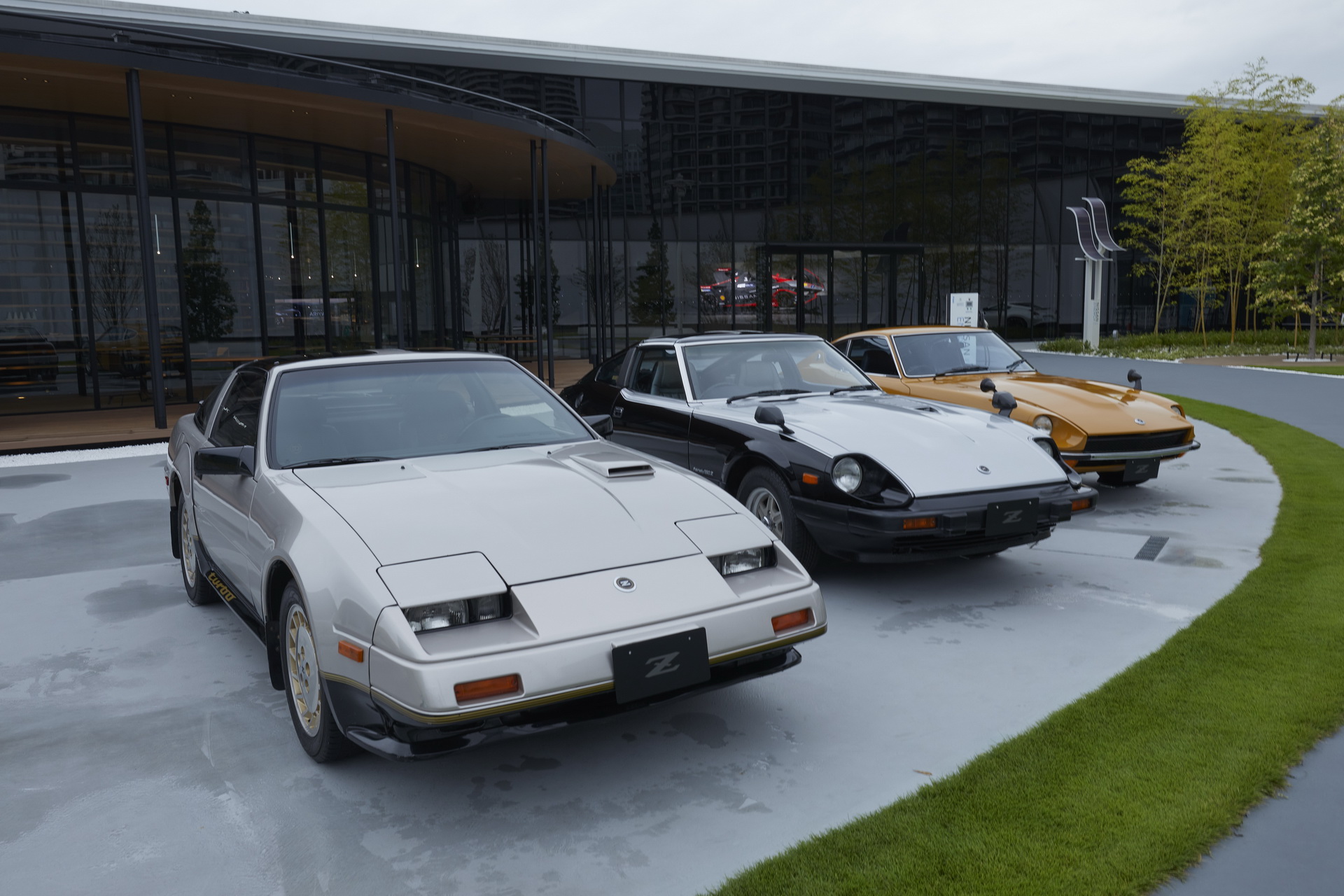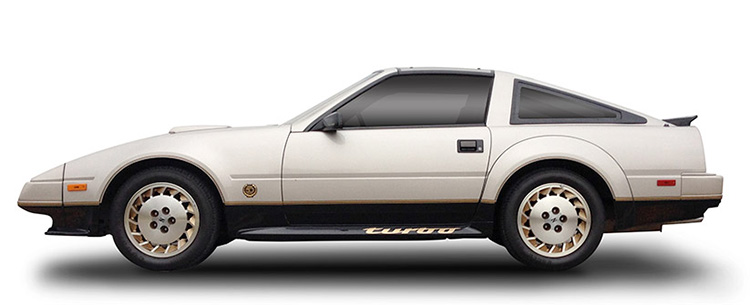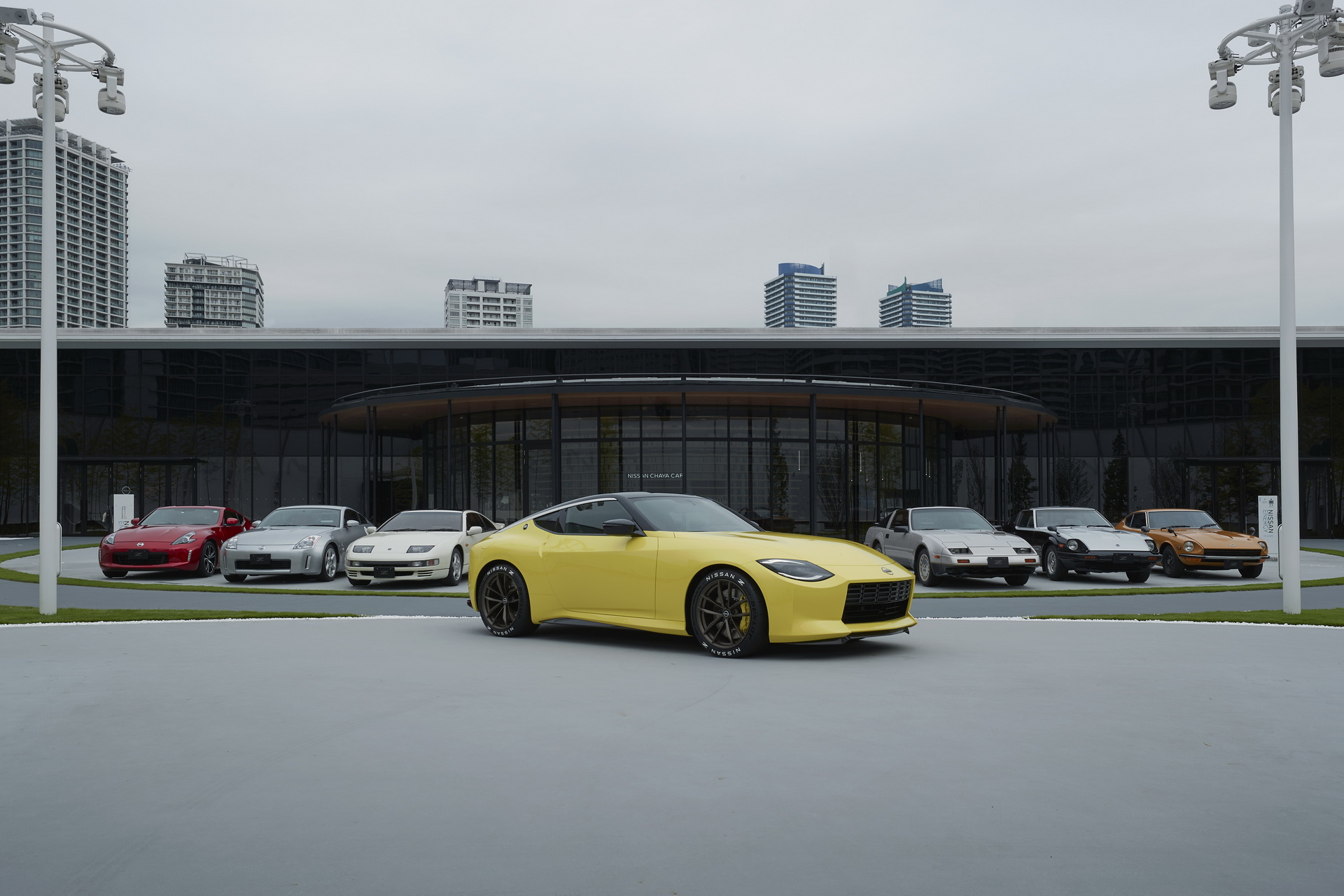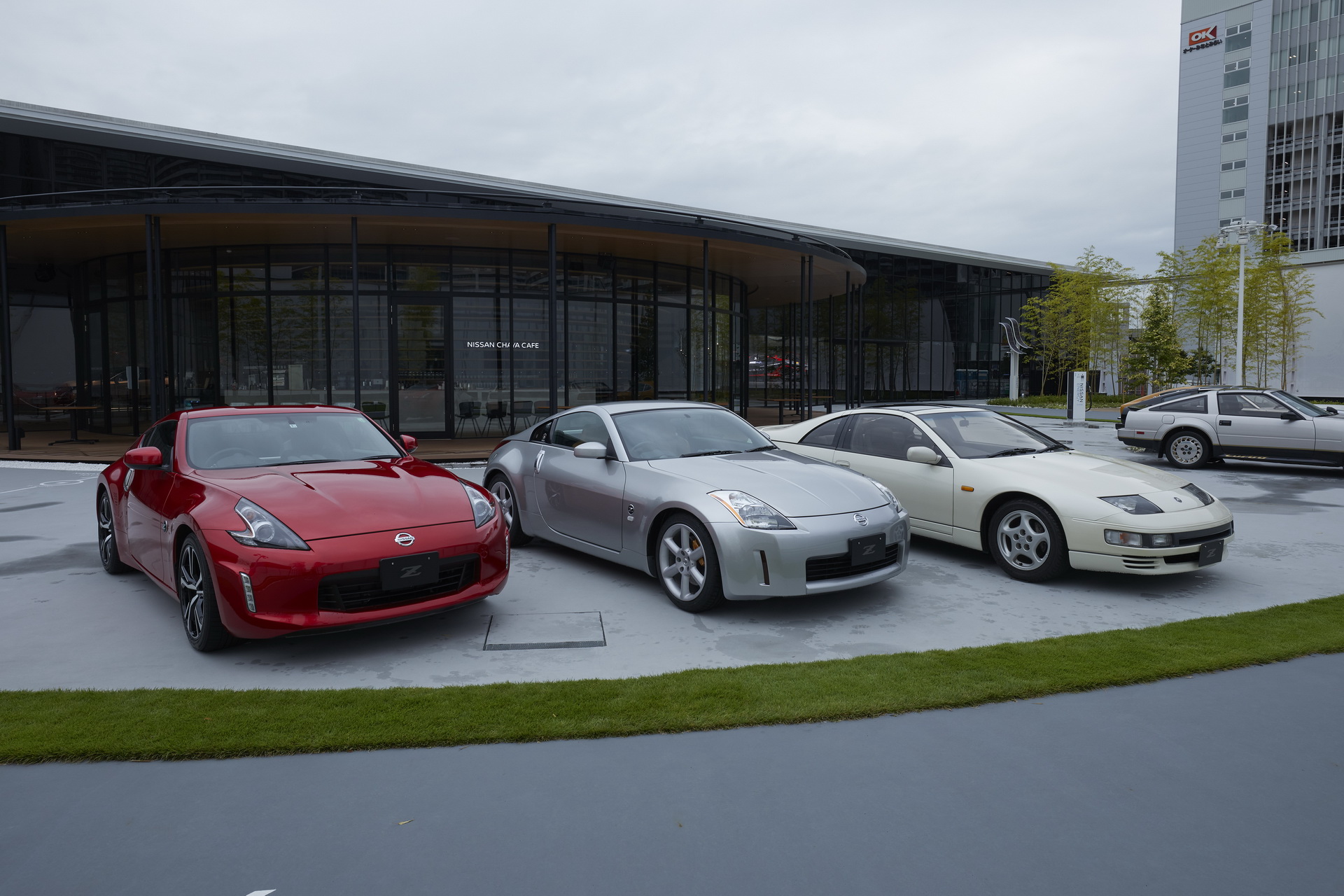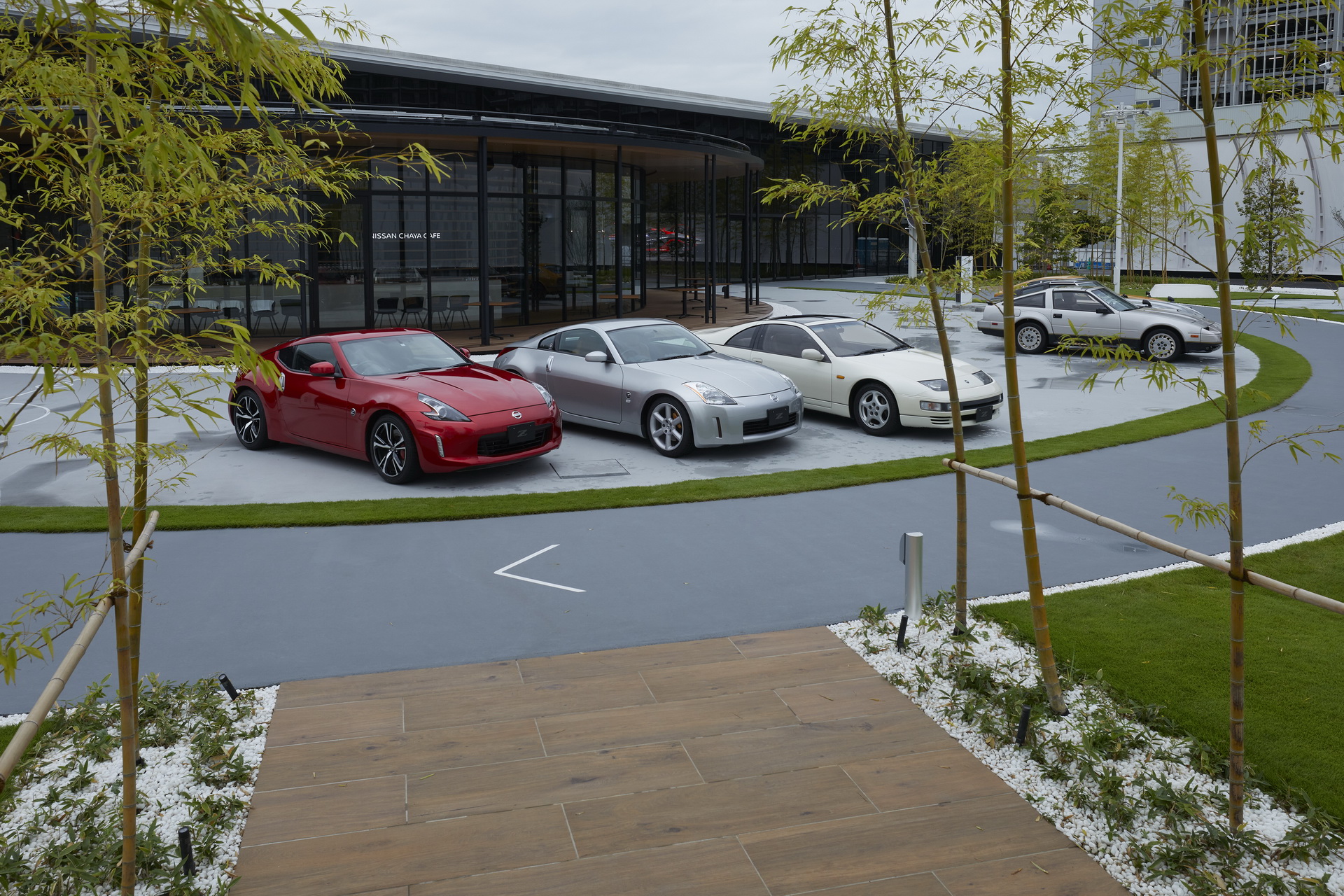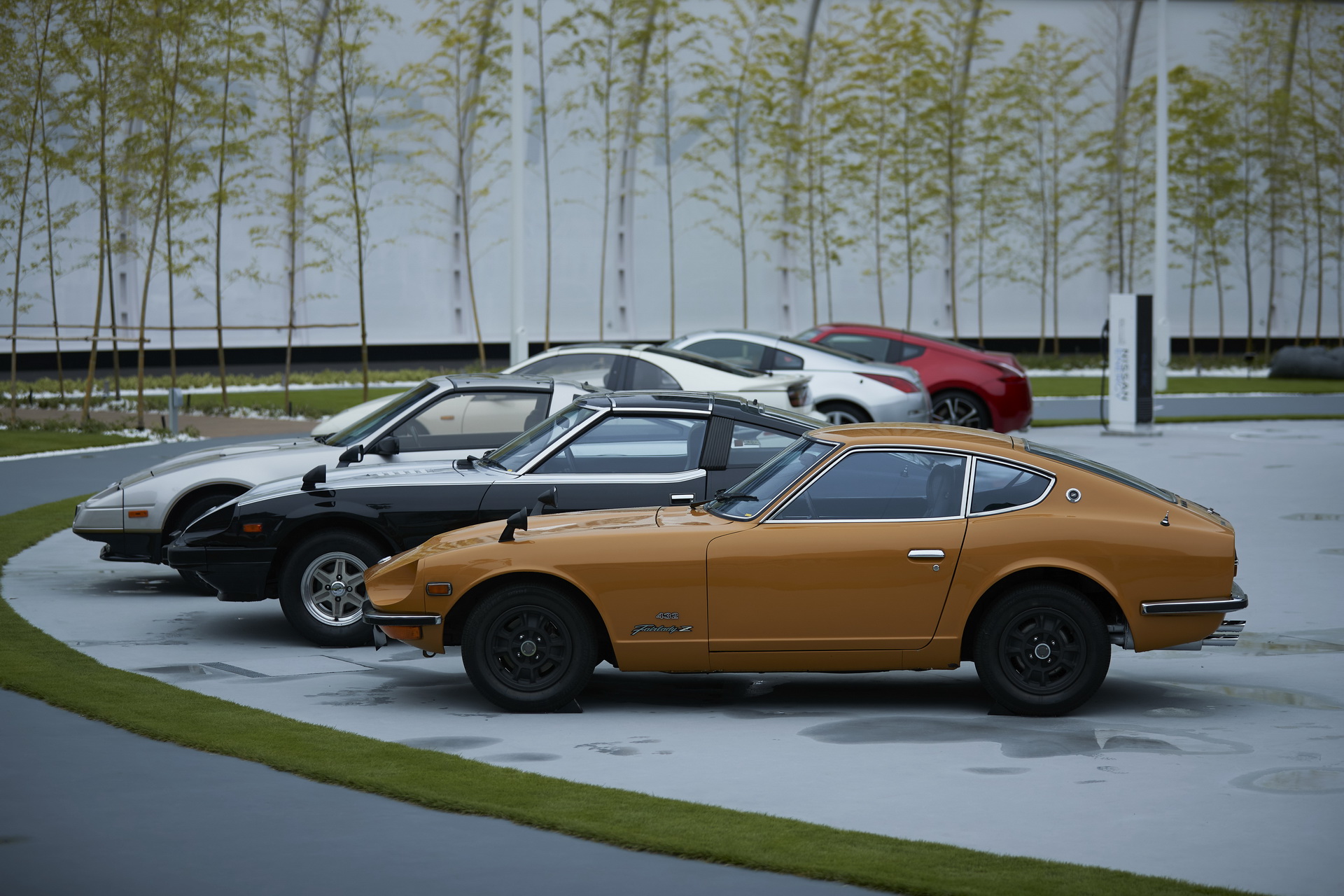The unveiling of the Z Proto last week, which previews the 400Z (name unconfirmed), coincides with the 50th anniversary of the Z sports car.
As a result, Nissan is honoring the series with a unique display of models in Yokohama, from its heritage collection that includes seven generations of Z cars, starting with the one that led the pack: the Fairlady Z, or the Datsun 240Z as it was known in some parts of the world, including North America.
Nissan Fairlady Z432 (PS30)
Introduced in December 1969, it came with the Skyline 2000 GT-R’s engine in the top spec, which was known as the Z432. The name came from the mill’s four valves, three carburetors and two camshafts, and the engine produced 160 PS (158 HP / 118 kW) at 7,000 rpm and 177 Nm (131 lb-ft) of torque at 5,600 rpm. The original Fairlady Z remained in production for 9 years, during which over 520,000 units were sold all over the world.
Nissan Fairlady 240ZG (HS30)
Originally designed to be exported solely to North America from 1970, the 240Z was also launched in Japan the following year in response to strong customer demand. For the Land of the Rising Sun, it was offered in the 240Z, 240Z-L and 240ZG variations, with the latter sporting a fiberglass nose piece, glass-covered headlamps and bolt-on fender flares. Powering the 240Z was a 2.4-liter inline-six with 150 PS (147 HP / 110 kW) and 206 Nm (152 lb-ft).
Nissan Fairlady 280Z-T (HS130)
Nissan updated the range in 1978, introducing the 280Z with a 2.8-liter inline-six pumping out 145 PS (143 HP / 107 kW) and 226 Nm (167 lb-ft). It was offered in 2 and 2+2 configurations, followed by a T-top variant that allowed enthusiasts to enjoy an open-top view of the sky above without sacrificing the rigidity of the body. A modified version, with gullwing doors and other equipment, starred in a popular Japanese TV show, ‘Seibu Keisatsu’, further boosting the appeal of the car.
Nissan Fairlady 300ZX (HZ31)
Packing Japan’s first mass-produced turbocharged V6, which replaced the old inline-six of the previous models, the 300ZX came out in 1983 and was joined by the 50th Anniversary Edition that celebrated Nissan’s 50th birthday. The latter was available in a silver/black color scheme, with a manual or an automatic transmission, and was made in 5,148 units for the U.S. and 300 for Canada.
Nissan Fairlady Z 300ZX (GCZ32)
With new styling, two interior configurations and two versions of the 3.0-liter twin-turbo V6, making 225 and 280 PS (222/276 HP / 165/206 kW) respectively, the Z32 was introduced in 1989. It featured advanced technologies, such as four-wheel steering, a four-wheel multilink suspension and high-performance brakes with four-piston aluminum calipers, and the one showcased in Japan is in the 2+2 300Z Twin Turbo top grade.
Nissan Fairlady Z Version ST 350Z (Z33)
With the 300ZX discontinued in 2000, Nissan returned to the segment two years later with the 350Z, which was previewed by a concept at the 2001 Detroit Motor Show. It had a curb weight of 1,450 kg (3,197 lbs), was 4,310 mm (169.7 in) long, 1,815 mm (71.5 in) wide and 1,315 mm (51.8 in) tall, and packed a 3.5-liter V6 with 280 PS (276 HP / 206 kW) and 363 Nm (268 lb-ft). Until December 2008, when it left production, more than 250,000 units of the 370Z had been built.
Nissan Fairlady Z ST 370Z (Z34)
The 370Z made its debut in 2009, featuring an evolution of the 350Z’s design language and a 336 PS (331 HP / 247 kW) 3.7-liter V6. It had reduced overall proportions, save for the width that was increased by 33 mm (1.3 in), and used aluminum in its construction to keep the weight down. Despite its age, the 370Z is still in production.



